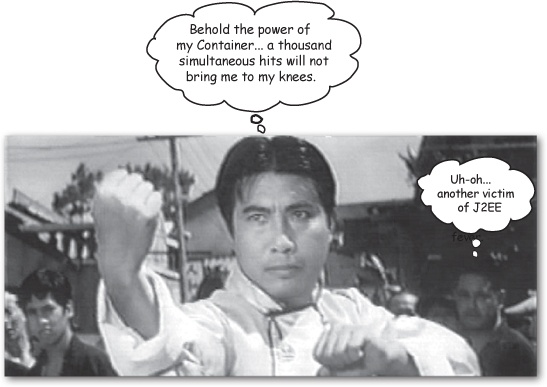Chapter 2. High-Level Overview: Web App Architecture

Servlets need help. When a request comes in, somebody has to instantiate the servlet or at least make a new thread to handle the request. Somebody has to call the servlet’s doPost() or doGet() method. And, oh yes, those methods have crucial arguments—the HTTP request and HTTP response objects. Somebody has to get the request and the response to the servlet. Somebody has to manage the life, death, and resources of the servlet. That somebody is the web Container. In this chapter, we’ll look at how your web application runs in the Container, and we’ll take a first look at the structure of a web app using the Model View Controller (MVC) design pattern.
OBJECTIVES
High-level Web App Achitecture
1.1 | For each of the HTTP Methods (such as GET, POST, HEAD, and so on), describe the purpose of the method and the technical characteristics of the HTTP Method protocol, list triggers that might cause a client (usually a Web browser) to use the Method, and identify the HttpServlet method that corresponds to the HTTP Method. |
1.4 | Describe the purpose and event sequence of the servlet life cycle: (1) servlet class loading, (2) servlet instantiation, (3) call the init method, (4) call the service method, and (5) call the destroy method. |
2.1 | Construct the file and directory structure of a Web Application that may contain (a) static content, (b) JSP pages, (c) ... |
Get Head First Servlets and JSP, 2nd Edition now with the O’Reilly learning platform.
O’Reilly members experience books, live events, courses curated by job role, and more from O’Reilly and nearly 200 top publishers.

